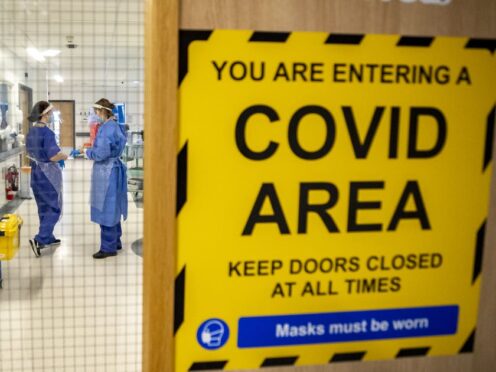
A leading public health official has criticised the Welsh Government for its failure to acknowledge the global coronavirus pandemic was a civil emergency, an inquiry heard.
Dr Quentin Sandifer, who was Public Health Wales’s medical director, said he was “astonished” the Welsh Government was still regarding the Covid-19 outbreak as a health-led incident as late as March 2020.
The World Health Organisation had in late January declared the new coronavirus, which had emerged from the Wuhan region of China, to be a “public health emergency of international concern”.
Giving evidence to the UK Covid-19 Inquiry, Dr Sandifer was asked his opinion on how “seriously” the Welsh Government was taking the threat posed by the virus.
“I think January 31, even at the time, really felt like a seminal moment,” Dr Sandifer said.
“The chief medical officer of the UK standing up and saying we have the first two cases in the UK just about a month after it was first reported by China to the World Health Organisation.
“It just felt to me it was an inflection point in what we would call the pandemic and the emergence of this outbreak.
“I personally was starting to get very concerned now about the extent to which I could see – beyond the chief medical officer – a response from Welsh Government.”
The inquiry heard an email was forwarded to Dr Sandifer from another Public Health Wales official on March 3 which stated the outbreak “is not a civil emergency situation” and was being kept under review.
Asked for his opinion on this, Dr Sandifer replied: “I was astonished at this.
“It is the beginning of March, and the Welsh Government resilience team were telling us they didn’t think we were approaching – if we weren’t already there – a civil emergency.”

“It is the case that the Welsh Government was considering it a health-led incident and the principal leadership, as I could see it, was coming from the chief medical officer.”
The witness suggested questions about that should be addressed to the Welsh Government.
The inquiry heard Public Health Wales prepared a briefing on March 11 making the case for the Welsh Government to declare a major incident.
It outlined predictions that Wales would see 1.5 million symptomatic cases, 200,000 requiring hospital admission, an estimated 18,000 needing mechanical ventilation and 25,000 predicted deaths.
The briefing also said that a “recurring theme of lessons learned” from past situations was that “major incidents are not declared soon enough”.
“The World Health Organisation declared a pandemic on March 11,” Dr Sandifer said.
“Following our first case on February 27 we began to see case numbers rise and by March 11 those case numbers were rising exponentially.

“I don’t think any of us knew at that time that Cobra had discussed the legislative basis for the response by then, I think on March 2, and had decided against using civil contingency legislation in favour of public health legislation.
“I just felt we need to lay our cards on the table and say to Welsh Government, ‘This is how we see it. Are you going to use emergency legislation?’.”
Dr Sandifer confirmed the response relayed to him from the Welsh Government was that such a declaration “would not be helpful”.
The inquiry also heard Dr Sandifer was concerned about the sourcing of Covid-19 tests for Wales in late February and his fears “national politics” would “trump public safety in Wales”.
He suggested there was a verbal agreement with pharmaceutical company Roche to supply Wales with 5,000 tests – yet most of these were later used for the UK-wide response.
“We didn’t have that in writing,” he said.
“My concern was that we were going to lose those tests, which of course events showed we subsequently did… we had about 500 tests.
“I was probably stepping out of line by speculating whether there was anything at UK Government level that might be behind that and emphasising my concern about the implications of losing that test capacity on public safety and need in Wales.”

Enjoy the convenience of having The Sunday Post delivered as a digital ePaper straight to your smartphone, tablet or computer.
Subscribe for only £5.49 a month and enjoy all the benefits of the printed paper as a digital replica.
Subscribe